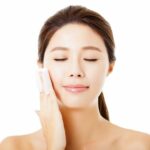1. Sunshine Reduces the Risk of Rickets and Osteoporosis
Ultraviolet B (UVB) rays in sunlight can stimulate the synthesis of vitamin D3 in the skin, which is then converted in the liver and kidneys.
Vitamin D3 is transformed into active vitamin D, enhancing calcium and phosphorus absorption in the intestines, thus maintaining bone density.
Children deficient in vitamin D are at a higher risk of developing rickets, while adults face a greater likelihood of osteoporosis.

2. Sunshine May Alleviate Rheumatoid Arthritis
Vitamin D can lower the risk of rheumatoid arthritis by regulating the function of immune cells.
Additionally, vitamin D inhibits the proliferation of synovial cells and the expression of matrix metalloproteinase (MMP), reducing cartilage destruction.
Clinical studies have revealed that the incidence of rheumatoid arthritis increases two to threefold in patients with serum 25(OH)D levels below 30 ng/mL, and the severity of symptoms is positively correlated with vitamin D deficiency.
Moderate sun exposure can increase vitamin D levels, thereby helping to reduce joint inflammation and pain.
3. Sunshine May Ease Symptoms of Depression and Anxiety
Sunlight stimulates the retina to release serotonin (5-HT), a neurotransmitter closely associated with mood stability and sleep regulation.
Lower serotonin levels due to lack of sunlight can lead to symptoms of depression and anxiety.
Individuals with seasonal affective disorder can significantly improve their mood by increasing their exposure to sunlight.
4. Sunshine Boosts the Immune System
Vitamin D regulates T-cell differentiation, inhibits the release of inflammatory factors, and reduces the risk of diseases such as rheumatoid arthritis and systemic lupus erythematosus.
Ultraviolet rays can also stimulate the skin to release antimicrobial peptides, enhancing local infection resistance.
Points to Note When Sunbathing
In terms of duration, the longer you sunbathe, the better. Generally, the most suitable times are before 10 am and after 4 pm when UV rays are relatively mild.
The length of sun exposure should also be controlled; 15 to 30 minutes at a time is sufficient. For individuals with sensitive skin, the elderly, or children, this time should be reasonably shortened.
Prolonged exposure to sunlight can lead to rapid dehydration, causing heatstroke, dizziness, nausea, and other symptoms.
Additionally, sun protection is essential. While sun exposure is beneficial, it is crucial not to leave your skin unprotected. Wear sunscreen, hats, sunglasses, and lightweight long-sleeved clothing to avoid excessive UV ray exposure.
In conclusion, while sunbathing is highly beneficial, you can only truly reap the health benefits by understanding the correct methods and paying attention to the key points mentioned above.






































